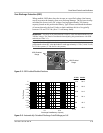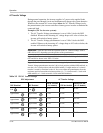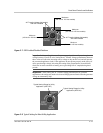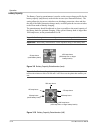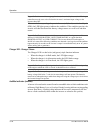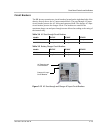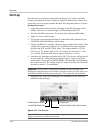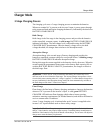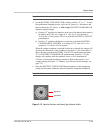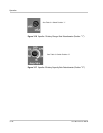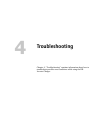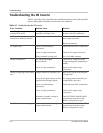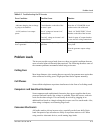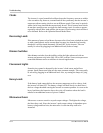
Charger Mode
975-0012-01-02 Rev A 3–17
Charger Mode
3-Stage Charging Process
The charging cycle uses a 3-stage charging process to maintain the batteries.
Whenever nominal AC is present at the inverter’s input, it passes power through
to the connected load and begins charging the batteries, indicated by the dual color
BATTERY CHARGER LED.
Bulk Charge
Bulk charge is the first stage in the charging process and provides the batteries
with a controlled, constant current. A solid orange BATTERY CHARGER LED
indicates bulk charge. The bulk charge level is adjustable using the BATTERY
CHARGER RATE potentiometer. Once the battery voltage rises to the bulk
voltage threshold, the charger then switches to the absorption mode.
Absorption Charge
Absorption charge is the second stage of battery charging and provides the
batteries a controlled, constant voltage for a set period of time. A blinking orange
BATTERY CHARGER LED indicates absorption charge.
During this stage the current supplied to the batteries slowly decreases. When the
current equals the programmed return amps value (battery bank capacity/40) set
with the BATTERY BANK CAPACITY potentiometer, the charger switches to
the third stage–float.
Float Charge
Float charge, the final stage of battery charging, maintains a charge to the batteries
whenever AC is present on the inverter’s input. A solid green BATTERY
CHARGER LED indicates float charging which reduces battery gassing,
minimizes watering requirements (for flooded batteries) and ensures the batteries
are in a constant state of readiness.
A new 3-stage charging cycle is initiated after an AC source is reapplied to the
inverter’s AC input terminals such as after a utility outage.
Important:
If there are DC loads connected to the battery, the current may never
decrease to the level to initiate the float stage. The inverter/charger incorporates a timer
circuit which starts counting when AC voltage is applied. To ensure that the charger does
not stay indefinitely in the absorption charge mode, the timer automatically switches to
the float charge mode when 12 hours have elapsed.
Important:
The Float Charge is a very low-current charge, also called a “trickle-
charge”. Some batteries may require higher current. Consult the battery manufacturer to
determine if the batteries being used can handle a float charge. The inverter will adjust its
charge rate to meet the battery requirement.



